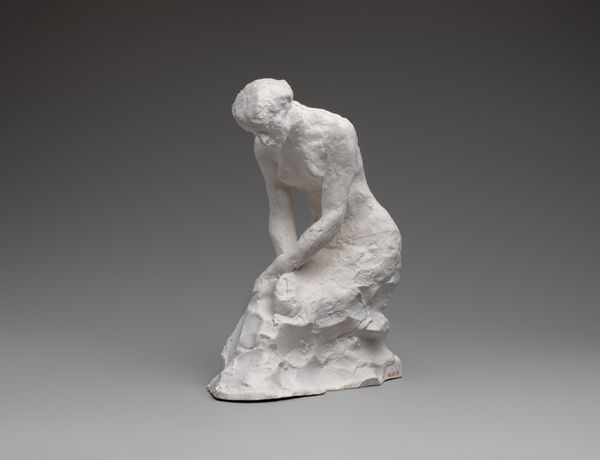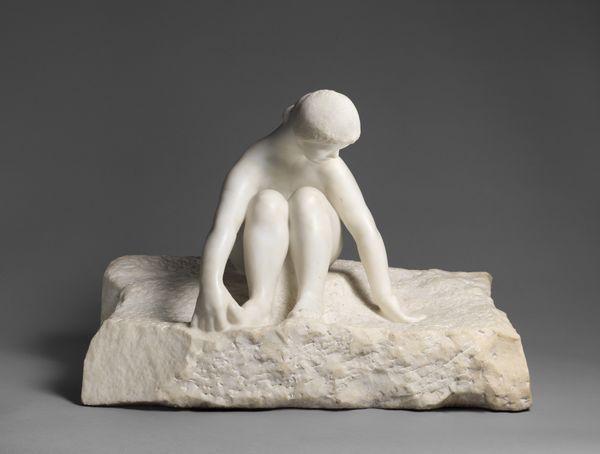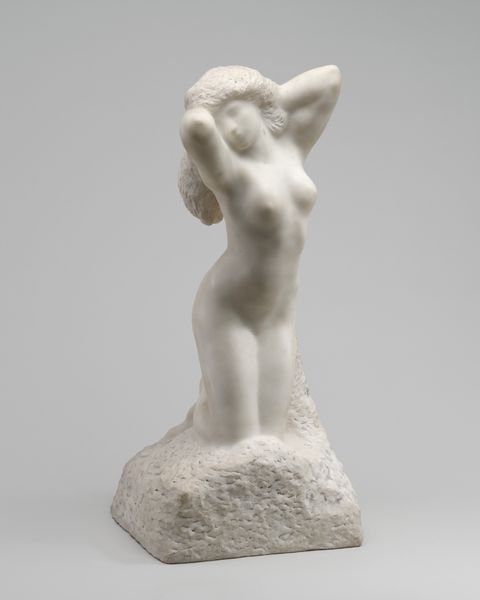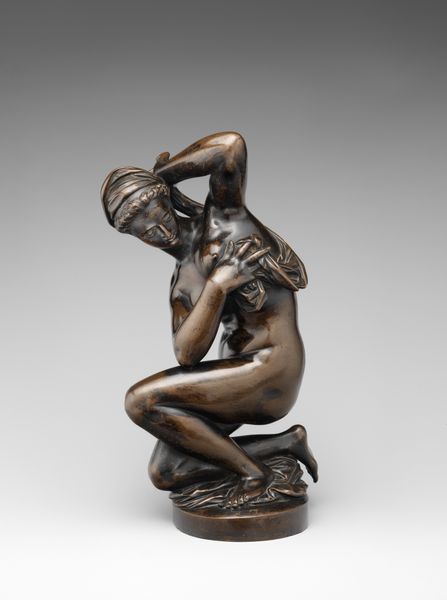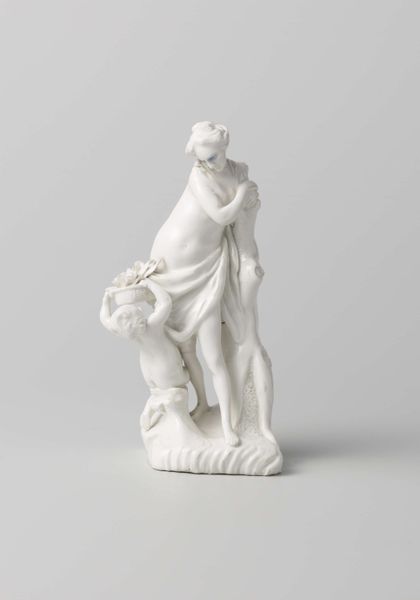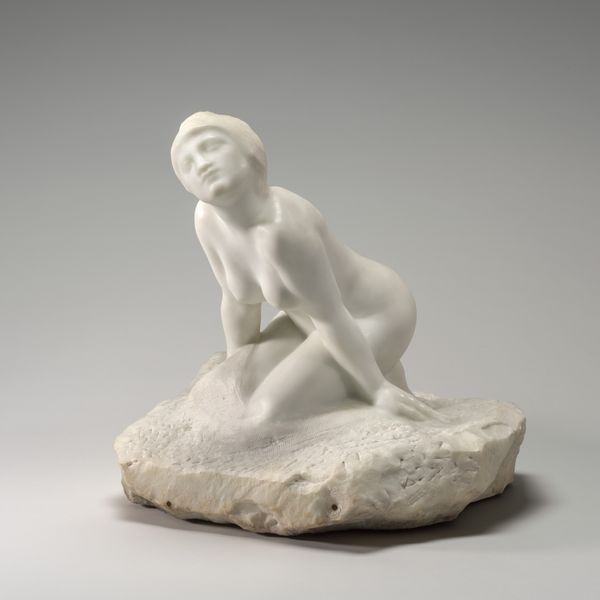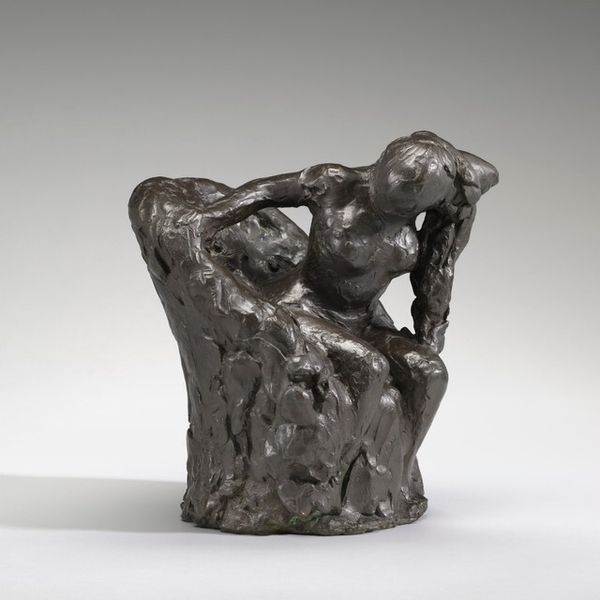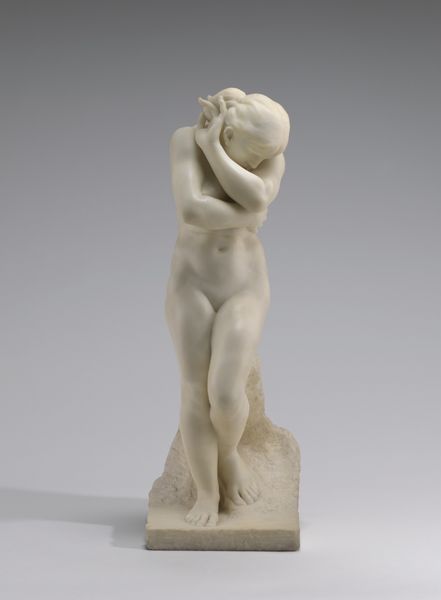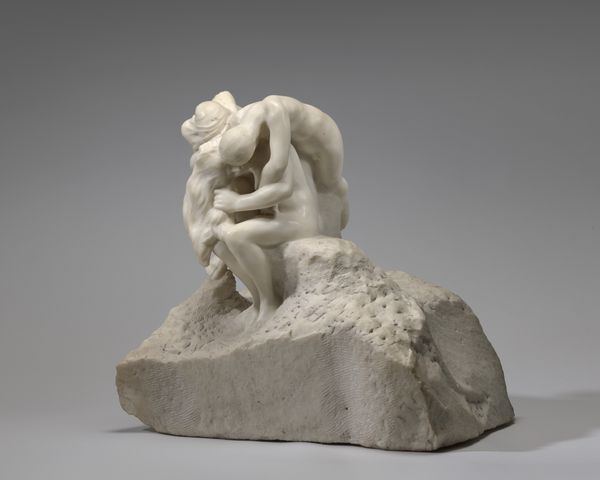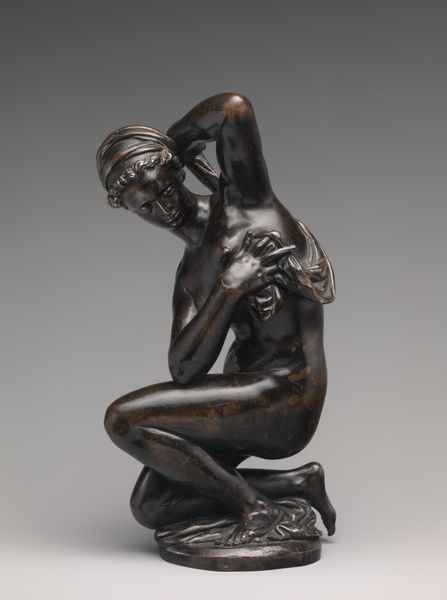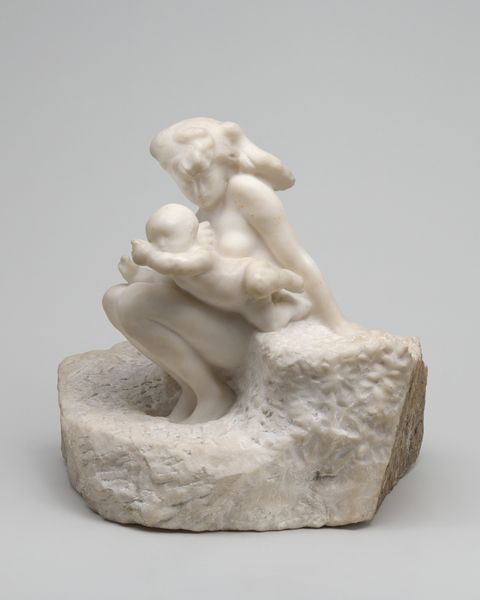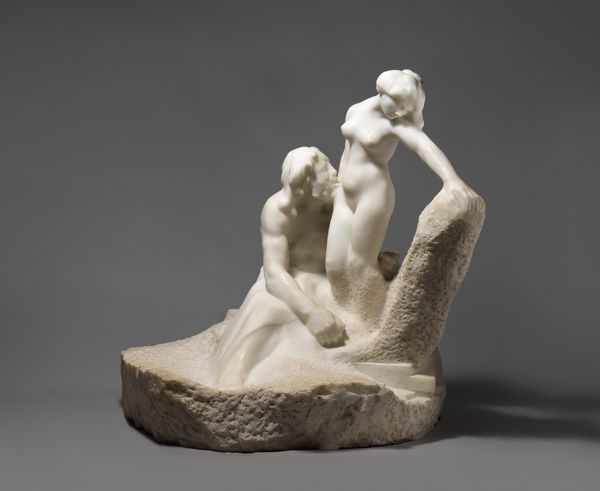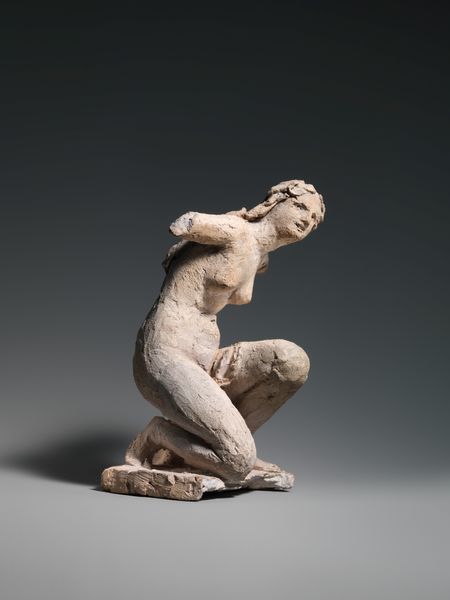
impasto, sculpture, marble
#
figure centered
#
sculpture
#
sculptural image
#
figuration
#
impasto
#
female-nude
#
sculpture
#
academic-art
#
decorative-art
#
marble
#
nude
#
modernism
#
male-nude
Dimensions: Height: 5 1/2 in. (14 cm)
Copyright: Public Domain
Editor: Here we have Auguste Rodin's "Study for Obsession," likely created between 1891 and 1912. It's a marble sculpture of a seated figure. I find it quite compelling; the figure's posture seems to convey intense introspection, maybe even despair. What do you see in this piece? Curator: This sculpture hits hard, doesn’t it? Looking at this piece, I’m immediately drawn to consider how Rodin is portraying internal conflict. Think about the late 19th and early 20th centuries – a time of great social upheaval and shifting identities. Does this pose – the inward gaze, the contracted form – perhaps reflect a sense of alienation that many felt amidst rapid modernization and industrialization? How might the suppression and oppression faced by different identity groups in that era inform our reading of this figure's bowed head and closed posture? Editor: That's interesting. I hadn't thought about the social context. So you’re saying the sculpture can be interpreted as representing more than just personal "obsession," but perhaps a broader societal unease? Curator: Exactly. Rodin’s figures often capture the anxieties and uncertainties of the time. Considering issues of gender, class, and race adds layers to our understanding. How does this piece resonate with contemporary dialogues about mental health and social isolation? And does the lack of clear facial features complicate, or perhaps universalize the narrative? Editor: I see what you mean. It's like Rodin is inviting us to project our own experiences onto the figure. This makes me see it in a completely different light. Curator: It's through that dialogue, between art, history, and our present-day concerns, that art truly comes alive. Thinking about this piece, I now wonder about the male gaze in sculpture, how can we engage with that productively here? Editor: Definitely something to think about. I’ll be pondering those questions!
Comments
No comments
Be the first to comment and join the conversation on the ultimate creative platform.
